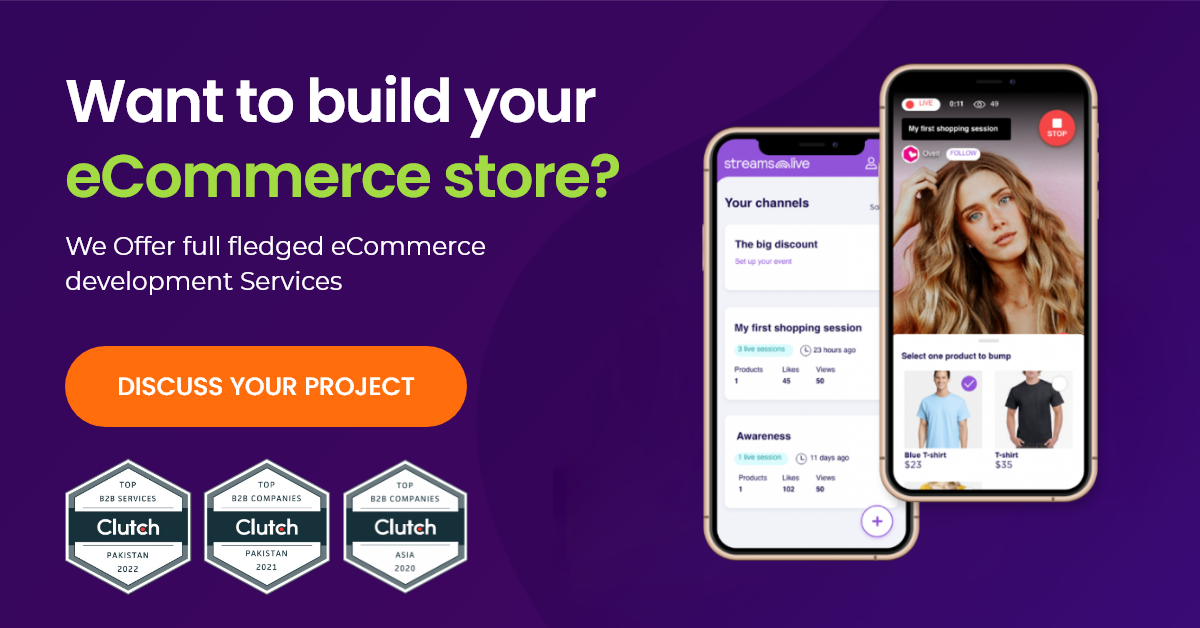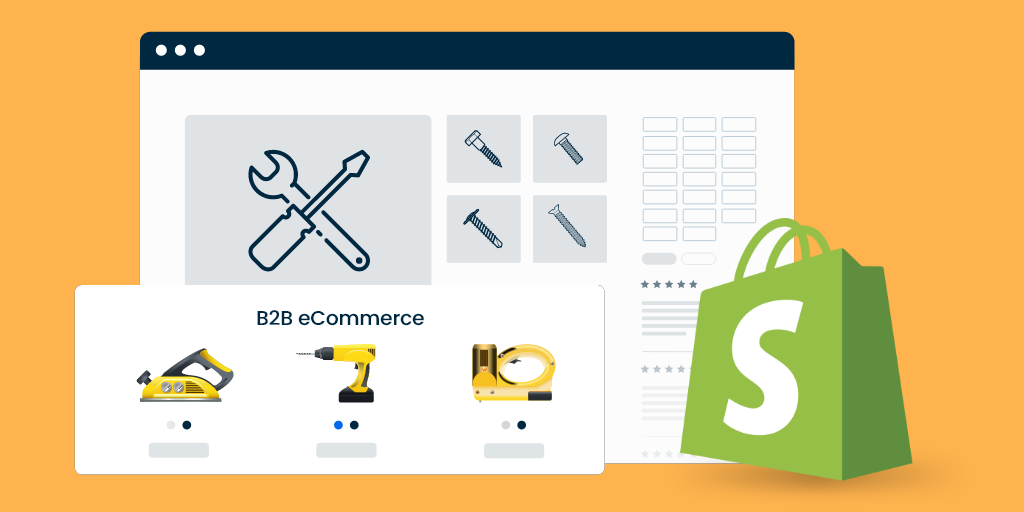Live Shopping: Is It The New eCommerce?

The see-now-buy-now mentality of consumers is continually rewriting retail as we know it. But when experts predicted that live shopping was going to be one of the biggest eCommerce trends in the future, more than a few questioned its power. However, it is high time to put aside that skepticism.
Well, one reason for its tremendous growth can be the Pandemic, as more consumers sought ways to shop online. According to research, live commerce purchases rose by a whopping 76% globally between March 2020 to July 2021. For cities still in lockdown, the live shopping experience resembles in-person shopping. Buyers watch people try on products in real-time and comment, allowing the brand to receive customer feedback instantly.
Even if the world begins to revitalize, the live commerce industry is only going to grow stronger. Research by Coresight found that live shopping events generated an estimated $5.6 billion worth of sales in 2020 in the US alone. The sales are projected to reach $11 billion by the end of 2021 and are expected to reach a whopping $25 billion by 2023.
Live shopping adds a human element to the online shopping experience of the customer. For example, having a well-known influencer or a renowned personality showcase the product to the audience. Viya, a popular live streamer from China, is a great example. She had Kim Kardashian West for a conversation just before Singles Day, aiding the influencer in selling 150,000 bottles of perfume bottles in a matter of seconds.
Before we proceed further into the nuances of live shopping platforms and their evolution, here’s a valuable resource for all the readers. We recently hosted a podcast with Liz Kressel on ‘Live Commerce’. In the Podcast, Liz shares her insights and experiences on how live commerce is reshaping the eCommerce landscape.
You can listen to the podcast using the following link:
So, what is live shopping?
Let’s dive deep into the eCommerce trend and its influence on business growth.
What is Live Shopping?
To understand live shopping, let’s go back to the mid-70s and 80s. Live shopping networks like QVC were quite popular on television, first across North America and then the world. In Canada, there was the Shopping Channel and more versions of it throughout the world. These channels specialize in selling home goods, fashion, and beauty. Each channel had its show hosts, and when a celebrity-backed product circulated in the market, an influential figure would directly pitch the product to the market.
In reality, the latest iteration doesn’t differ much from its original form. It just swapped televisions for mobile phones and TV channels for social media platforms like TikTok and the Call Now for the Buy Now button.
One way of understanding live shopping is to reimagine how we use social media platforms. Instead of simply liking or commenting on a product, you have the opportunity to purchase it.
Sounds incredible, right?
Live shopping is really a way to shop from a brick-and-mortar store from the convenience of your couch. It is a win-win, really!
How Does Live Shopping Work?
In simple terms, live shopping is a highly engaging experience giving the sellers an opportunity to showcase their product and customers to buy the product in real-time. It goes beyond clicking or filling up the cart. It is an interaction between businesses and customers that guides and creates a pathway for business success.
Here’s how it typically works:
- The host of the live stream, often a celebrity or influencer, introduces and showcases the products they are promoting.
- Viewers can ask questions or make comments in real-time using a chat feature, and the host responds to these questions and comments as they appear on the screen.
- Viewers can purchase the products being showcased by clicking on links that are provided in the video or in the chat window.
- Some platforms allow viewers to make purchases directly within the live stream, while others redirect viewers to an e-commerce website.
- Often, viewers are offered exclusive discounts or special promotions that are only available during the live stream.
The Benefits of Live Shopping For Businesses
Still Skeptical of the idea?
Take a look at the benefits of implementing Live Shopping in your business.
Better Customer Engagement
The audience’s attention span is decreasing by the day, and there is high demand for a personalized experience. So, how does a brand keep the audience engaged?
The Increasing popularity of live shopping proves that consumers require new experiences. It is true that your prospects are likely to be bombarded with new brands, ads, and promotional emails at all times, but videos have higher engagement rates than any other form of content.
Figure this — people are twice likely to share a video with their peers than other types of content. Besides, with live shopping, viewers can also chat with the brands in real-time. All these factors pave the way for better customer engagement rates, resulting in more sales.
Generates Massive Sales
Marketing your live shopping event is the key here. If done right, you can expose your product to hundreds or even thousands of people in just a few minutes. The fact is, if your viewers are having fun, they might just invite others to join in.
Think Viya, the Chinese influencer, in the example given above in the post. That is the power of live shopping done right! If you use the right tactics to get the word out, there is no looking back!
Builds Brand Awareness
Building brand awareness effectively means getting in front of your target audience. This is exactly what live shopping help you with — getting in front of your audience.
The best part, the interactive nature of live streaming also increases the likelihood of the audience remembering your brand.
What’s even better, if you host a celebrity or an influencer at your live event, it can go a long way in making your business popular among your target audience.
Influences Impulsive Buying
Live shopping creates a feeling of urgency. It is a different form of eCommerce that makes the customers feel like they belong, and to make it last, they often purchase things they thought they would never buy.
People also give in to impulsive buying when they experience the fear of missing out on something. It may be caused by seeing others buying the same product, or the product may have a discount until the live event last. It may also be because of an influential personality promoting the product on the live broadcast.
In a nutshell, live shopping really influences impulsive buying and excites the audience. This paves the way for a fun shopping experience for them and results in increased sales.
Bring Products to the Lime Light
Sometimes, there are products that are just sitting in storage. It may be because of the high cost, or it may be complicated to use. You can use live shopping to give it the push it requires to get sold. In simple words, Live shopping holds the potential to transform your underperforming product into a top seller.
That’s not it.
Consider this, you begin your broadcast and state that a certain product isn’t popular yet, and your viewers could be the first ones using it, this may give a boost to your sales. After all, who doesn’t like to become a trendsetter? They may purchase the product seeing themselves as the first ones setting the trend for others.
Live Shopping Platforms and How to Select Them
Talking about QVC and HSN, it was easy to know where the buyers came from — the living room in front of their TV screen. However, with new platforms, live shopping can happen from a buyer’s phone or computer, and yes, it can also be streamed on smart televisions.
So, if you are considering live streaming for your products, there are two main avenues to get started.
- Live Shopping Platforms or Apps
These options are great options for merchants who are looking for a new way to build an audience or are searching for new ways of marketing.
Here are some of the most prevalent platforms:
- ShopShops: this platform is widely popular among Chinese customers and has expanded its reach to the US market.
- Talkshoplive: it launched in 2018 and has over two million followers. According to Bloomberg, Talkshoplive’s sales have increased by seven times since its debut.
- NTWRK: it is a selling platform that has an audience of 75% men. According to research, some shows on the network have topped $1 million in sales in less than 10 minutes.
- Amazon: it is giving the brands live streaming services with lifestyle, fitness, and cooking programs.
- Google Shopping: it offers shoppable stories.
- PopShop Live: Sellers on PopShop live have gross merchandise value of $500,000 and more, with 80% of the customers coming back to the website to buy again.
However, using third-party platforms also has its disadvantages. Using platforms that provide live streaming services means you will have to give up control over customer experience. They may also be disconnected in terms of branding and limit opportunities for personalized customer engagement.
- Hosting Live Events in Your Store
If you want more control and customization, then hosting a live event on your storefront is the best option. Many retailers are taking this route with their own live shopping channels. It gives retailers an opportunity to brand and capture data.
Not just that, self-hosting can also give an opportunity to repurpose content or even replay the live shopping event after it’s been aired. Retail Touchpoint considers it an important capability, stating that 70% of sales from a live-streaming event happen after the event. Besides, to maximize viewership, you can simultaneously cast the broadcast on social media platforms.
However, hosting a live shopping event doesn’t mean that customers will come. To make it a success, you need to have a strategy in place to attract viewers.
There are many ways you can do that. For example, businesses on Shopify Plus with live shopping pages on their stores can attract more customers with the help of Shopify Plus Partners like Livescale. Not just that, the Channelie.io plugin enables live shopping and video streams as well as enables multistreaming of live shopping shows on Facebook, Twitch, and YouTube. You simply need to make sure that the services you hire for eCommerce development understand this requirement and install the plugin to your store before going live.
Best Practices for Implementing Live Shopping in Your eCommerce Marketing Strategy
- Consider Your Format
A successful live shopping event is dependent on two key factors: the product demos and the interaction between the brand and the consumers. But the format you opt for to reach out to the customers is totally up to you.
Popular formats include tutorials, interviews, and Q&As (from a celebrity, influencer, or brand ambassador). The Behind the scene clips to show how a product is developed or made is also a great approach to reaching out to the audience.
- Live Shopping isn’t Just an Ad; it Should be Entertaining
Considering that people today have a notoriously short attention span, your live shopping video must not only be informative but entertaining as well. Now you don’t need to have a script for your live video. Come up with the idea that people may be interested in.
A great example of such content is the 22-minute live stream pet adoption event hosted by Petco featuring a Dog fashion show. During the event, nearly a million people tuned in, resulting in a 12% lift in online traffic, and generated sales that doubled the cost of the hosted event. Not just that, the success of the event can be calculated by the doggie models being adopted at the end of the day.
- Collaboration is Crucial For Success — not Influencers
The face of live shopping is what matters greatly to the audience. It is necessary for the audience to really connect with the brand to be able to build their trust and decide to make a purchase.
This is similar to the celebrity endorsement deals in the 80s and 90s — a publicly associated figure being the key to developing the trust and loyalty of the buyers. But today, these figures are the influencers whose opinions highly matter to the buying audience.
Influencer marketing has opened a new space for brands giving them an opportunity to reach out and find new customers. As said above, buyers want product recommendations from someone they can trust, and it is much easier to trust a human on Instagram or TikTok that looks like they can be a part of your own social circle.
It is a fact that influencers can create a sense of urgency, but they are not necessarily conversion drivers. Research states that people closely associated with the brand and the product are the most effective sellers — the reason being they know the product inside and out. This delivers authenticity and helps viewers to emotionally connect with the product.
The Future of Live Shopping
eCommerce is a convenient way of shopping. But today, it is all about making an experience. Live shopping is a solution for human interactions that deliver experiences and build the credibility of a brand. It is, in other words, a necessary dose of human connection that makes shopping a lot more fun for the buyers.




